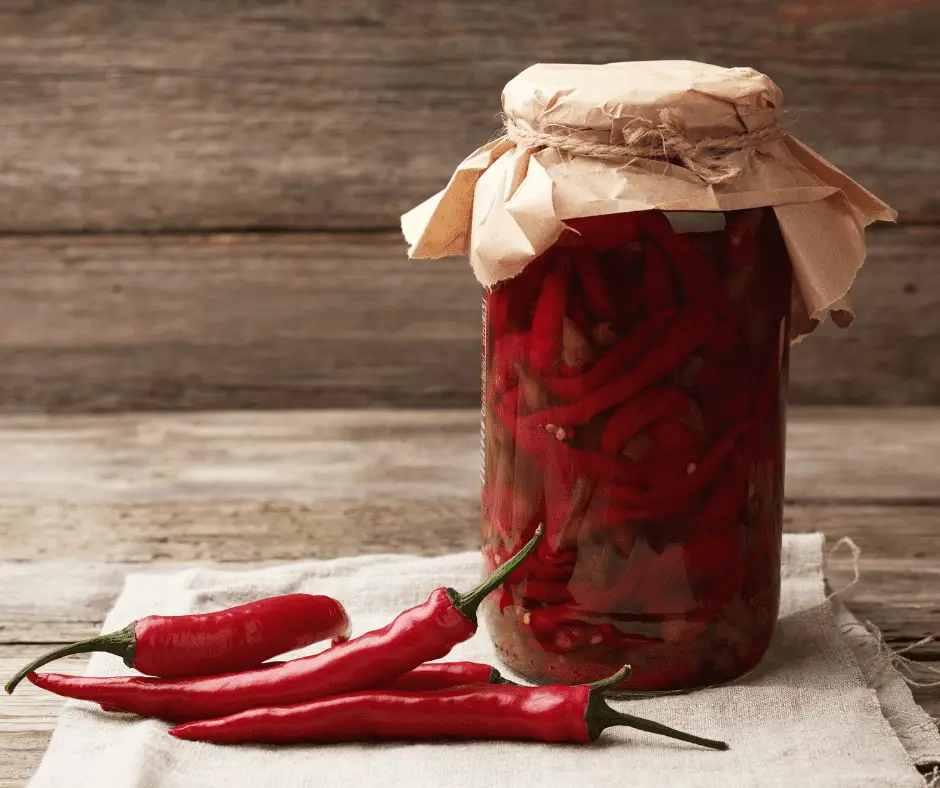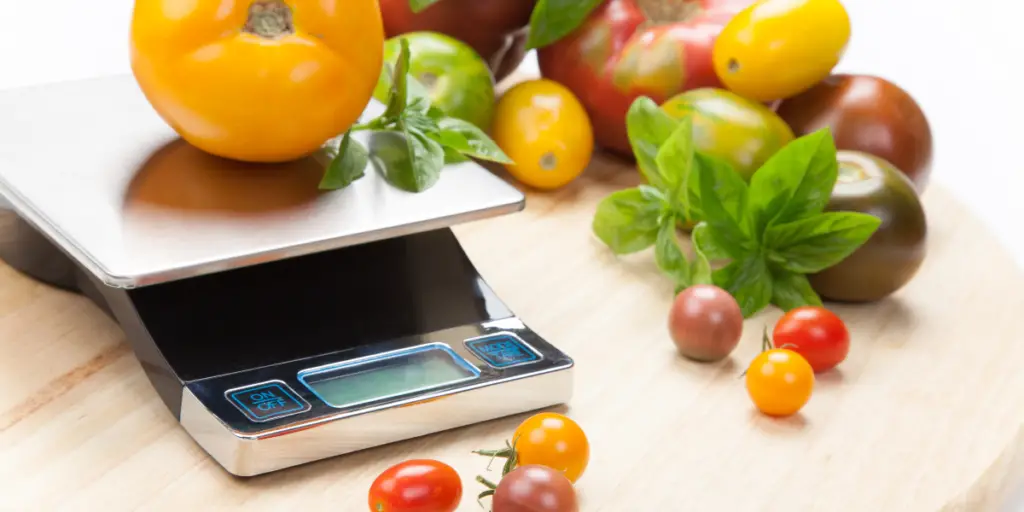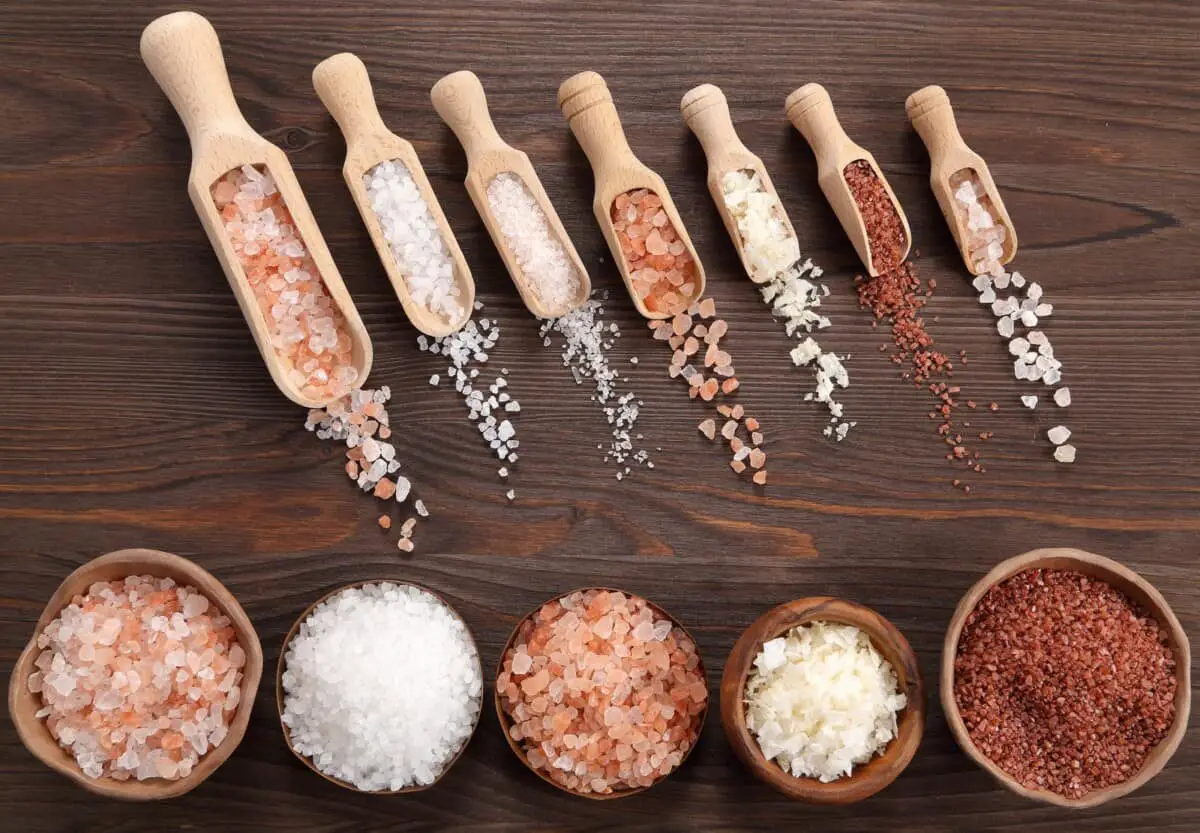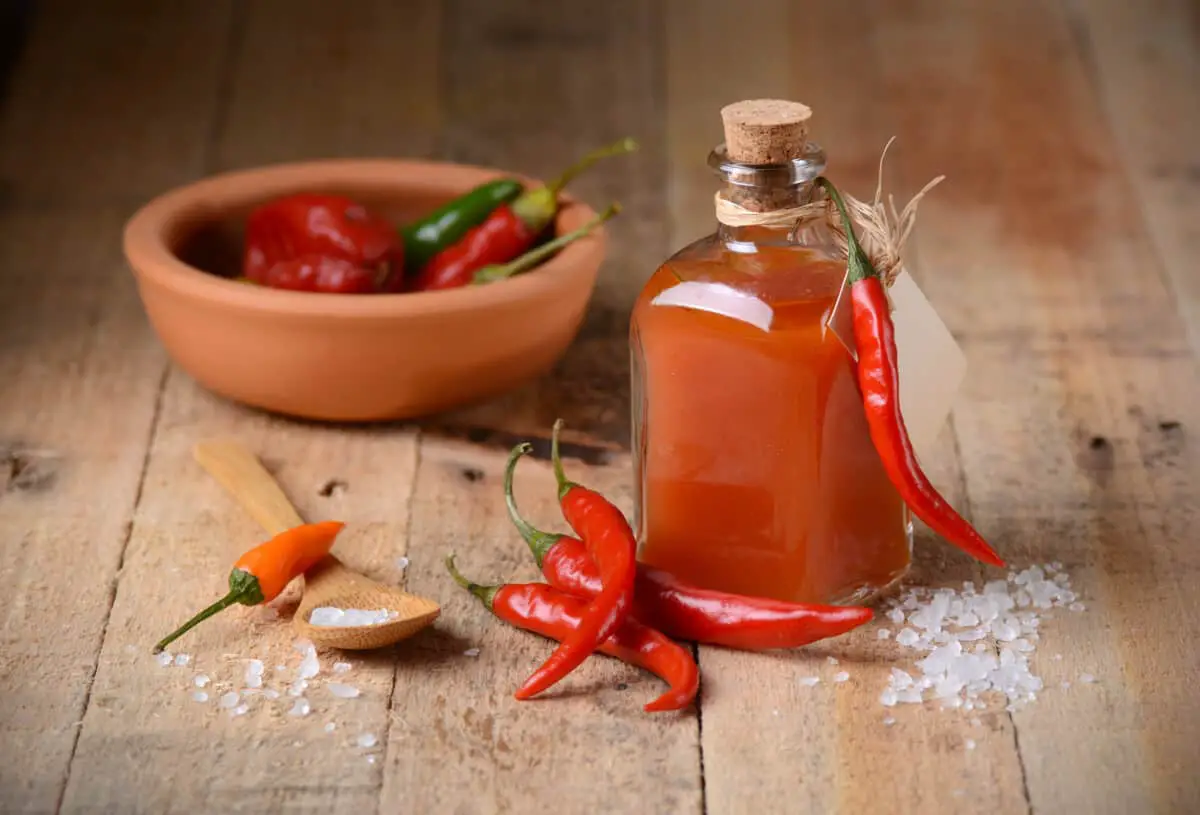Fermented Hot Sauce: Foolproof Brine Percentage And How To Measure It
Fermented Hot Sauce is one of the greatest human inventions. It is remarkably delicious and versatile, and easy to make at home. However, one thing seems to confuse people: How much salt should I put on my brine? What is the correct brine salt percentage? Well, let me tell you.
The correct brine percentage for a fermented hot sauce is usually between 3% and 5% of the weight, not the volume. To be safe, go with an average of 4%. So, if water + peppers (and other veggies) = 1kg (1000g), you will put 40g of salt.
Here is a formula for easy visualisation:
Weight of (Water + Peppers + Veggies) x 0.04 = Perfect Brine Percentage
How to calculate the weight of salt for a perfect brine
If you follow the 4% rule, everything will work out fine, and you will have a nice fermented hot sauce soon. However, if you want to, you can adapt the rule to your taste preferences and the environment where you are fermenting.
If you are interested in that, keep reading. I’ll teach you all about it in this post.

When To Use More Or Less Salt?
I follow the 4% rule because it is easy and safe. Too much salt might kill the good bacteria, and we definitely want them alive and fermenting our homemade hot sauce. On the other hand, too little salt can lead to mould or leave our fermentation project unprotected from the unhealthy bacteria we are trying to avoid.
A wide range of saltiness will provide a healthy environment for Lacto-fermentation. This is why you don’t have to be too rigid with the measurements and should experiment with them. If you are a beginner, try staying between the 2% and 5% range.
Don’t be afraid to experiment! This is the only way to find out your sweet spot!
If you live in a warmer place, you can put more salt into your brine. The salt slows down the fermentation process, so increasing the salt concentration can buy you some time for the funkiness and the umami flavour to fully develop without getting too sour.
You might also add more salt if you want to leave it fermenting for longer, for the same reason as above. Salt will slow the fermentation process, so the beneficial microbes are working on your veggies for longer.
If you like it saltier or are adding vinegar in the seasoning step, you can add more salt too. However, you can make this kind of alteration after the fermentation process, which, for me, makes more sense.
Finally, you can too add more salt if your peppers are thinner-walled and you are doing a mash. Some pepper mash recipes go as high as 10%! But maybe leave this kind of high percentage mash/brine after you have experimented a bit.
| You can add less salt if… | You can add more salt if… |
|---|---|
| …you live in a colder place. | … you live in a warmer area. |
| …you are adding a bit of brine from a previous ferment. | …you want to ferment it for a more extended period. |
| …you are using a starter culture. | …you like it saltier, or you are adding vinegar in the end. |
| …you have thicker-walled peppers. | …you are making a pepper mash. |
Regarding using less salt, you can do it if you live in a colder place. Another situation where less salt is required is if you plan to add a starter culture (like whey, miso, or brine from a previous ferment).
What About Sugar? Should I Use It As Well?
It is not necessary to use sugar when making fermented hot sauce. I generally only use it when I season it after the fermentation. And even in this case, only if I feel the need to do so, taste-wise.
It can be a good idea to add some sugar if your peppers have thinner walls or not much flesh. The added sugar could help the fermentation process since this kind of pepper will likely have fewer carbs for the Lacto-bacteria to ferment. It won’t make the result taste sweeter, as the bacteria will process the sugar during fermentation.

How To Weigh The Water And The Veggies?
- Choose a glass container for your fermentation project. It must be able to contain all the vegetables and water.
- Place the container on a scale and hit the button “tare.” That will make the scale ignore the weight of the jar.
- Put the vegetables inside and add enough water to cover them.
- Take note of the weight shown on the scale, which is the total weight of water + vegetables. Multiply it by 0.04 to know how much salt you are supposed to use. Please write this number somewhere, so you don’t forget it. Trust me, it happens.
- Transfer the water to another container (it is ok if some veggie pieces or spices go with it).
- Place the new container with the water on the scale and hit tare. The container with the vegetables should NOT be on the scale. Only the container with the water should be on the scale.
- Add the salt to the jar on the scale until you have the amount calculated before.
- Mix the salt with the water in this container. Shake it if you want to. Then, pass the water with salt back into the container with the vegetables.
Voilà! You have a perfect brine!
If you don’t have another container or bowl available, in step 5, you can just hit the button tare and add the salt to your container with the peppers + vegetables. That way, you wouldn’t have to do steps 5 to 8, but it would be harder to mix the salt and water. If you have another container, follow the steps. It is not worth risking your brine.
The most important thing is to remember that the vessel you are using also has a weight, so always hit the tare button with the vessel empty on the scale or use a vessel exactly like the one you are using to tare the scale.
Another way to do this is to weigh the empty container at the beginning of the process and subtract it from the total weight, but the only reason I can see for doing it this way is if your scale does not have the option to tare.
Some people have already written down the weight of their jars and pans. That way, they don’t risk forgetting that step and can deduct the container’s weight from the total weight. It is especially beneficial if you ferment or make other preservation methods often.
If you have any other methods that you think I should add here, please comment below. The goal is to have as much useful information here as possible.
What If I Don’t Have A Scale?
Yes, you should use a scale. If you don’t have one, I would advise you to buy a cheap kitchen scale on Amazon (like this one). But, supposing you don’t have the time right now and are ready to start fermenting, here are a few tricks to help you out.
Vegetables Weight
For the vegetables’ weight, here is a table from a post office’s weight guidelines to calculate how much an item weighs. You can compare the weight of these itens to the weight of your vegetables to get an estimate. This way, you can roughly discover the weight of your veggies.
| Object | Grams (g) | Ounces (oz.) |
|---|---|---|
| Packet of Crisps | 35 g | 1.23 oz. |
| Tennis Ball | 60 g | 2.12 oz. |
| Average Smartphone | 150 g | 5.29 oz. |
| Roll of Toilet Paper | 225 g | 7.93 oz. |
| Box of 80 Teabags | 240 g | 8.47 oz. |
| Small Jar of Jam | 340 g | 11.99 oz. |
| Can of Soda | 390 g | 13.76 oz. |
| Tin of Baked Beans | 420 g | 14.82 oz |
| Packet of Pasta | 500 g | 17.64 oz. |
| Box of Cornflakes | 750 g | 26.45 oz. |
| Bag of Sugar | 1 kg (1000 g) | 35.27 oz. |
| Bottle of Wine | 1.25 kg (1250 g) | 44.09 oz. |
| Two Liters of Milk | 2 kg (2000 g) | 70.55 oz |
| Big Bag of Dog Food | 5 kg (5000 g) | 176.37 oz. |
Water Weight x volume
As for the water,
1 gram (g) = 1 mililiter (ml).
or
1 fluid ounces (fl oz) = 1.043175557 ounce (oz).
You can just use 1 fl oz = 1 oz if you do not feel like doing math, but using the calculator would be more accurate.
So just measure the volume, and you know how much weight you have.
Salt Weight and Volume
The table below shows how much weight one tablespoon of each kind of salt weighs.
| Salt Type | Grams (g) | Ounces (oz) |
|---|---|---|
| Fine Grind Sea Salt | 14.75 g | 0.52 oz. |
| Sea Salt Crystals | 16.81 g | 0.59 oz. |
| Kosher Salt | 18.00 g | 0.63 oz. |
| Table Salt | 20.00 g | 0.71 oz. |
| Maldon Sea Salt Flakes | 10.00 g | 0.35 oz. |
| Celtic Coarse Sea Salt | 11.94 g | 0.42 oz. |
As you can see from the table above, there is a significant variation between the corresponding salt weights within the same volume (one-tablespoon measurement) depending on the type of salt. That is why the standard is to always measure the salt using the weight!
Find the salt you are using in the table above, so you can roughly estimate the weight you are going to add to your ferment.

After this, go back to the 4% rule, and you will have your perfect brine!

